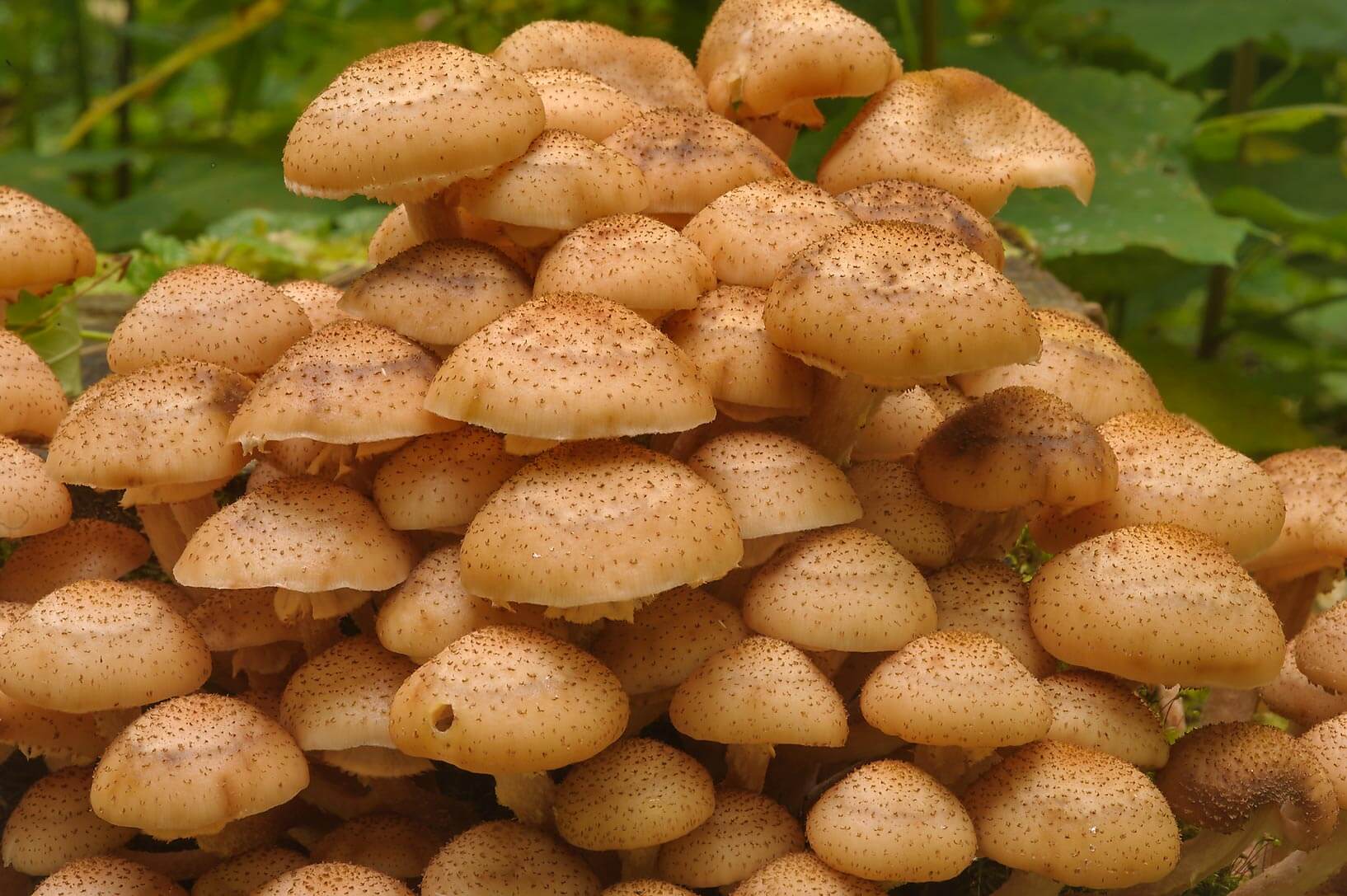Embarking on the journey of mushroom cultivation can be both exciting and daunting, especially if you do not know the mushroom cultivation terminology that is often used.
When learning about mushroom cultivation you encounter a plethora of technical terms and jargon.
Whether you're a beginner or looking to dive deeper into advanced techniques, understanding the lingo is crucial.
This comprehensive guide will demystify common mushroom cultivation terms, providing you with a solid foundation to grow mushrooms like a pro.
So, let's roll up our sleeves, put on our fungi-tinted glasses, and get started!
What is Mushroom Cultivation?
Mushroom cultivation, or the art of growing mushrooms, is a rewarding hobby that can also be a profitable venture.
Whether you're cultivating mushrooms in your backyard or in a controlled indoor environment, mastering the terminology is the first step towards success.
 Mushroom Cultivation Terminology
Mushroom Cultivation Terminology
Agar
Agar is a gelatinous substance derived from seaweed, used as a growth medium in petri dishes for culturing mycelium. It provides a sterile environment for observing and propagating mycelium.
Think of it as the mushroom's cozy bed, where all the magic happens.
Autoclave
An autoclave is a specialized device used for sterilizing equipment and substrates through high-pressure steam.
It's essential for ensuring a contaminant-free environment in mushroom cultivation.
Casings
Casings are layers of material, such as peat moss or vermiculite, applied over the colonized substrate to retain moisture and create a microclimate suitable for fruiting.
It's like wrapping your mushrooms up in a cozy blanket.
Cloning
Cloning involves taking a tissue sample from a mushroom fruit body and growing it on agar to create an exact genetic copy.
It's like having your own mini mushroom army, all identical and ready for action. Just don't expect them to do your chores!
Cold Shock
Cold shock is a technique used to initiate fruiting by exposing the colonized substrate to lower temperatures for a short period.
Think of it as a mushroom's version of a cold shower—invigorating and slightly uncomfortable, but it gets the job done!
Colonization
Colonization refers to the period when mycelium—the vegetative part of a mushroom—spreads its delicate, white filaments through the substrate. During this phase, there are no visible mushrooms, just the mycelium doing its thing.
It's like the calm before the storm, where the mycelium is secretly plotting its mushroom takeover.
Contamination
Contamination is the bane of every mushroom grower's existence. It occurs when unwanted organisms like mold spores or bacteria enter the substrate and compete with the mycelium.
Contamination can be viewed as the mushroom's version of unwanted houseguests—they eat your food, make a mess, and never leave.
Culture
A culture refers to mushroom mycelium of a specific species or strain stored for later use. Cultures are typically maintained on petri dishes, in syringes, or slants, ready to be used when needed.
Think of it as your mushroom starter kit, waiting to be introduced to a substrate and start the party!
Dikaryotic
Dikaryotic mycelium contains two compatible nuclei in each cell, which is necessary for fruiting.
Dowels
Mycelium dowels, also known as plug spawn, are wooden dowels colonized with mycelium. They are used to inoculate logs when cultivating mushrooms outdoors.
Think of them as tiny wooden mushroom soldiers, ready to invade and conquer new territories.
Flush
A flush refers to the period when the mycelium produces actual mushrooms. Mushrooms tend to grow in groups, followed by a short rest period before another flush occurs.
It is the mushroom's version of a family reunion—lots of new faces, a bit chaotic, but always a good time.
Fruiting
Fruiting is the magical moment when visible mushrooms begin to emerge from the substrate. It's the culmination of the colonization process and the start of the harvesting phase.
It is the long awaited grand entrance for the mushroom. Ta-da!
Fruiting Chamber
The fruiting chamber is the dedicated space where mushrooms are grown. It's a controlled environment designed to provide optimal conditions for fruiting.
Think of it as the mushroom's version of a luxury suite—perfect temperature, humidity, and just the right amount of pampering.
Fruiting Induction
Fruiting induction refers to the environmental changes, such as increased fresh air exchange and light exposure, used to trigger the fruiting process.
It's like giving your mushrooms a gentle nudge and saying, "Alright, it's showtime!"
Fruit Bodies
Fruit bodies are the actual mushrooms that you harvest and consume. They are the result of the mycelium's hard work and the ultimate goal of the cultivation process.
Fruit bodies are a delicious reward—all that effort finally pays off!
Champignons
Fungi is a broad term that encompasses all mushrooms and other organisms like mold. While all mushrooms are fungi, not all fungi produce mushrooms.
Think of it as the mushroom's extended family—some are cool, some are a bit weird, but they're all related somehow.
Gas Exchange
Gas exchange refers to the process of allowing fresh air into the fruiting chamber while removing carbon dioxide. Gas exchange is also sometimes called fresh air exchange or FAE.
Proper gas exchange is crucial for promoting fruiting and preventing contamination.
Imagine it as the mushroom's equivalent of taking a refreshing breath of air—quite literally!
Grain Spawn
Grain spawn is a type of spawn made from colonized grains like rye or wheat.
It's a popular choice for inoculating bulk substrates due to its nutritional content and ease of use.
Grow Bag
A grow bag is a specialized bag designed for cultivating mushrooms.
It is made of breathable material that allows for gas exchange and is often used for growing mushrooms in a controlled environment.
Grow Kit
A grow kit is a convenient, all-in-one package designed for beginners to start cultivating mushrooms at home.
It typically includes a pre-colonized substrate and instructions for fruiting.
HEPA Filter
A HEPA filter is a high-efficiency particulate air filter used in mushroom cultivation to remove contaminants from the air, ensuring a sterile environment.
Humidity
Humidity is the amount of water vapor in the air. Maintaining the right humidity levels is essential for successful colonization and fruiting, as mushrooms require a moist environment to thrive.
Think of it as the mushroom's version of a tropical vacation—warm, humid, and perfect for relaxation.
Hyphae
Hyphae are the individual strands that make up the mycelium network. These fine, white filaments are the building blocks of the mycelium, working together to colonize the substrate and produce mushrooms.
Picture them as the mushroom's own tiny construction team—constantly active and diligently at work.
Incubation Room
An incubation room is a climate-controlled space where the substrate is kept during the colonization process. Maintaining the right temperature and humidity in the incubation room is essential for successful colonization.
It is the mushroom cultivation version of a cozy nursery—warm, comfortable, and perfect for growth.
Inoculation
Inoculation is the process of introducing spores or spawn into a substrate to initiate colonization. It's the first step in the mushroom cultivation process and sets the stage for the mycelium to spread and produce mushrooms.
Think of it as the mushroom's version of planting seeds—with a bit of luck and care, something amazing will grow.
Laminar Flow Hood
A laminar flow hood is a workspace designed to provide a sterile environment for mushroom cultivation.
It uses a HEPA filter to remove contaminants from the air, ensuring that the workspace remains clean.
Culture liquide
Liquid culture refers to mushroom mycelium growing in a liquid solution. It's a convenient way to store and propagate mycelium, making it easy to inoculate new substrates.
Envision it as the mushroom's version of a nutrient-rich smoothie—loaded with goodness and ready for action.
Medicinal Mushrooms
Medicinal mushrooms are species known for their health benefits, such as boosting the immune system or reducing inflammation. Medicinal mushrooms are sometimes referred to as functional mushrooms.
Examples include Reishi, Lion's Mane, and Turkey Tail.
Think of them as the mushroom's version of a superhero—always ready to save the day and make you feel better.
Monokaryotic
Monokaryotic mycelium contains one nucleus per cell and is typically the result of germinating spores. It must mate with compatible monokaryotic mycelium to form dikaryotic mycelium capable of fruiting.
Picture it as a mushroom singles mixer—everyone's on the hunt for their ideal partner.
Mycelium
Mycelium is the vegetative part of a mushroom, consisting of a network of hyphae.
It's a vast underground network, always connected, always communicating, and always ready to spring into action.
Parafilm
Parafilm is a flexible, self-sealing film used to cover petri dishes and other containers in mushroom cultivation.
It helps maintain sterility and prevents contamination.
Pasteurization
Pasteurization is a process that reduces microscopic competitors in a substrate, giving the mycelium an advantage over harmful organisms.
Think of it as the mushroom's version of a thorough cleaning—not perfect, but good enough to keep the unwanted guests at bay.
Pins/Pinning
Pins, or pinning, refer to the tiny fruit bodies or "baby mushrooms" that emerge from the substrate.
It's an exciting phase in the cultivation process, signaling the start of the fruiting stage.
Petri Dish
A petri dish is a small, transparent dish with a flat lid, typically filled with an agar mixture. In mushroom cultivation, petri dishes are used to grow and clone mycelium, providing a sterile environment for observation and experimentation.
Imagine it as the mushroom's version of a cozy, clean apartment—ideal for growth and development.
Pressure Cooker
A pressure cooker is a versatile kitchen appliance that can be used to sterilize substrates and equipment for mushroom cultivation.
It uses high-pressure steam to kill contaminants.
Rhizomorphic
Rhizomorphic mycelium is characterized by its thick, rope-like structure. It's often considered a sign of vigorous and healthy mycelial growth.
Think of it as the mushroom's version of a bodybuilder—strong, robust, and ready to flex its muscles.
Self-Healing Injection Ports
Self-healing injection ports are specialized ports used in grow bags to allow for the injection of spores or liquid culture without compromising sterility.
They seal automatically after use, preventing contamination.
Spawn
Spawn is a colonized carrier substrate that holds a specific mycelium strain until it's ready to be transferred to another substrate.
Commonly made from grain, spawn provides a convenient way to introduce mycelium to a new environment.
Spores
Spores are the reproductive particles released by mushrooms into the air. They can be used to isolate specific mushroom genes and create mycelium, making them essential for propagation and breeding.
Think of them as the mushroom's version of tiny paratroopers—ready to float through the air and conquer new lands.
Sterilization
Sterilization is a process that destroys all microscopic competitors in a substrate, typically achieved by maintaining a temperature of 121°C for an extended period.
Sterilization is typically done in an autoclave or pressure cooker.
Envision it as the mushroom's version of a thorough deep clean—no unwanted visitors permitted!
Strain
A strain is a specific variety of a mushroom species, each with its unique characteristics. Different strains can exhibit variations in appearance, flavor, and growth habits, making them prized among mushroom enthusiasts.
Think of them as the mushroom's version of a unique personality—each one special and worth getting to know.
Substrate
The substrate is the material where mushrooms grow, such as wood, hay, or compost. Choosing the right substrate is crucial for successful colonization and fruiting, as different mushroom species have specific substrate preferences.
Picture it as the mushroom's version of a cozy home—welcoming, comfortable, and ideal for growth.
Substrate Supplementation
Substrate supplementation involves adding nutrients to the substrate to enhance mycelial growth and fruiting. Common supplements include bran or gypsum.
Think of it as the mushroom's version of a multivitamin—packed with nutrients and ready to boost growth.
Super Pasteurization
Super pasteurization, also known as atmospheric sterilization, involves maintaining a temperature close to 100°C for an extended period.
It provides a clean canvas for the mycelium once the substrate has cooled down and is similar to true sterilization but takes longer.
Imagine it as the mushroom's version of a thorough spring cleaning—requiring extra effort, but ultimately worthwhile.
Syringe Filter
A syringe filter is a small filter typically used on mason jars/flasks when experimenting and working with liquid cultures.
It helps maintain sterility by preventing contaminants from entering the liquid culture while allowing for gas exchange.
Tomentose
Tomentose mycelium has a fluffy, cotton-like appearance. While it can be healthy, it may also indicate slower growth compared to rhizomorphic mycelium.
Think of it as the mushroom's version of a cozy blanket—soft, comfortable, but maybe not the most energetic.
Yield
Yield refers to the amount of mushrooms harvested during a flush.
Maximizing yield is the goal of every mushroom grower, and understanding the factors that influence yield can help you optimize your cultivation process.
Conclusion
Mastering the terminology of mushroom cultivation is the first step towards becoming a successful mushroom grower.
Whether you're a beginner or looking to advance your skills, understanding these key terms will give you the confidence to dive deeper into the fascinating world of mushroom cultivation.
To get started on your mushroom cultivation journey, consider exploring our range of products designed to support your growth:
- Mushroom Grow Kits: Perfect for beginners, these kits include everything you need to start growing mushrooms at home.
- Mycelium Dowels: Ideal for outdoor cultivation, these dowels are ready to inoculate logs and start your mushroom adventure.
- Mushroom Liquid Cultures: Convenient and versatile, liquid cultures make it easy to propagate and inoculate new substrates.
- Cultivation Supplies: From substrates to incubation tools, we have all the supplies you need to create the perfect environment for mushroom growth.
So, grab your supplies, prepare your substrates, and get ready to grow some amazing mushrooms!
Happy cultivating! 🍄❤️




 Mushroom Cultivation Terminology
Mushroom Cultivation Terminology
